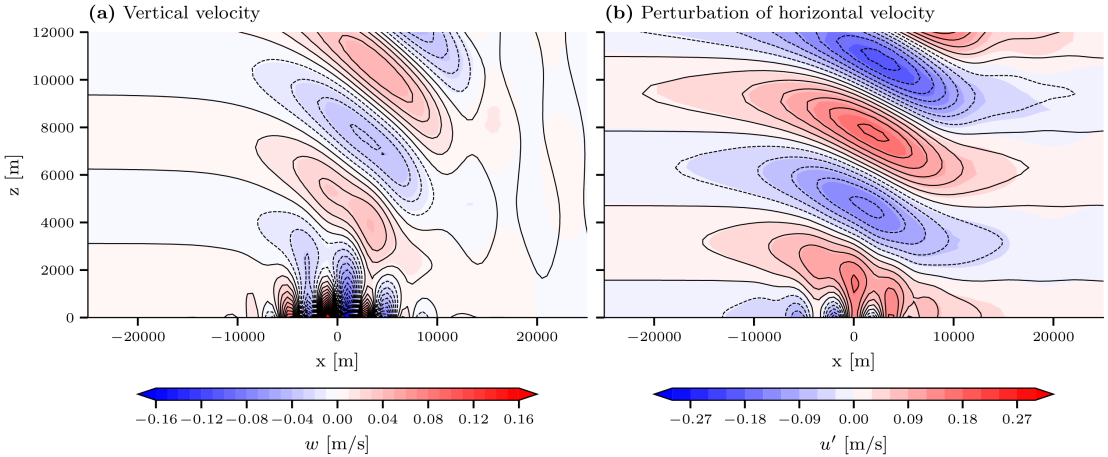Model development
Contributions to the development of COSMO and IFS
In the framework of the PASC-funded project external pageKILOScall_made (Kilometer-scale nonhydrostatic global weather forecasting with IFS-FVM) our group is currently involved in the further development of a new version of the Integrated Forecasting System (IFS) of the ECMWF. Instead of the spectral transform technique, this IFS version is based on finite volume spatial discretization, and the coding implementation of the dynamical core is based on GT4Py – a Python framework that includes a high-level embedded DSL to write stencil computations – which will enable access to heterogeneous supercomputing architectures, performance portability and scientific productivity. This project is co-lead by external pageChristian Kühnleincall_made at the ECMWF and supported by other colleagues at the ECMWF and CSCS. The main project scientists are Stefano Ubbiali, Nicolai Krieger and Lukas Papritz.
Earlier model developments of the group focused on adding atmospheric water cycle diagnostics to the limited-area COSMO model. COSMO-tag includes the tagging of pre-specified moisture sources and can be used to quantitatively analyze the contributions of different sources to, e.g., a heavy precipitation event. COSMO-iso is a model version equipped with stable water isotopes and can simulate d2H and d18O in vapour and precipitation. Both models were applied for studies in different geographical regions, and the basic implementations are documented in the publications by Winschall et al. 2014 (Atmos. Chem. Phys., 14, 6605-6619) for COSMO-tag and Pfahl et al. 2012 (Atmos. Chem. Phys., 12, 1629-1648) for COSMO-iso. Both these developments were mainly led by external pageStephan Pfahlcall_made.
The PhD projects conducted in this research are are outlined below:
High-resolution simulations with IFS-FVM

Nicolai Krieger
The finite volume module (FVM) of the Integrated Forecasting System (IFS) is a new dynamical core that solves the fully compressible nonhydrostatic all scale governing equations based on a generalized height-based terrain-following vertical coordinate. The integration is done with non-oscillatory forward-in-time Eulerian advection and a centred two-time-level semi-implicit integration scheme. Through a finite-volume discretization and an implementation in Python with the domain specific language GT4Py, the IFS-FVM addresses challenges of heterogeneous and diverse high performance computing architectures and the need to apply numerical techniques minimizing the communication footprint of the model.
This project will contribute to the further development of the IFS-FVM. The IFS-FVM will be prepared in different configurations for high-resolution numerical experiments to test and validate the IFS-FVM. The main part of this project will then use IFS-FVM’s capabilities to simulate atmospheric flow phenomena from implicit large-eddy simulations to global convection-resolving simulations to gain novel insight into interesting research questions in atmospheric dynamics. Using large-eddy simulations, local wind phenomena such as the Laseyer wind in the mountains of north-eastern Switzerland will be investigated. The influence of different flow parameters such as environmental wind speed and wind direction on metrics of the flow in the target region will be investigated. Towards the end of the project, global convection-permitting simulations of extreme precipitation related to atmospheric rivers or intense warm conveyor belts will be performed and investigated.
Supervised by Heini Wernli, external pageChristian Kühnleincall_made (ECMWF), and Hanna Joos
